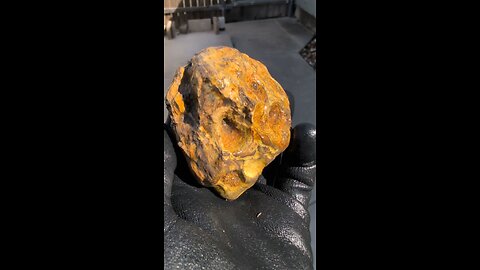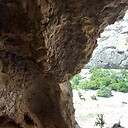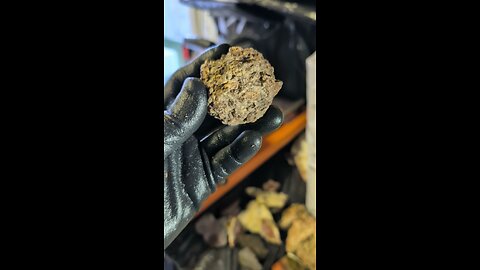
Limestone
3 videos
Updated 6 months ago
Limestone is a sedimentary rock primarily composed of calcium carbonate (CaCO₃), often in the form of the mineral calcite. Here's a detailed exploration of limestone:
Formation:
Marine Environments: The most common origin of limestone is through the accumulation of shells, coral, algae, and other marine organisms on the ocean floor. Over time, these deposits are compacted and cemented to form rock.
Chemical Precipitation: Limestone can also form through the direct precipitation of calcium carbonate from water, particularly in warm, shallow marine conditions where evaporation is high.
Evaporites: In some cases, limestone forms from the evaporation of water in lakes or seas, leading to the deposition of carbonate minerals.
Characteristics:
Composition: Primarily calcium carbonate, but can contain magnesium carbonate (forming dolomitic limestone), clay, sand, or organic material.
Texture:
Crystalline: When formed from direct precipitation, it can be crystalline.
Clastic: When composed of fragments of fossils or shells, it might be grainy or sandy.
Color: Typically white, gray, or yellowish, but can vary widely due to impurities like iron oxide (red or brown), organic matter (black), or clays (various shades).
Fossils: Depending on its origin, limestone often contains fossils, making it fossiliferous.
Types of Limestone:
Chalk: A soft, porous limestone made up of microscopic calcium carbonate shells of plankton.
Travertine: Formed by the precipitation of carbonate minerals from hot springs or in caves.
Oolitic Limestone: Composed of small spherical grains called ooids, often formed in shallow, warm marine waters.
Marl: A mix of limestone and clay, often formed in ancient lake beds.
Crystalline Limestone: Where calcite crystals are visible, indicating chemical precipitation rather than fossil accumulation.
Uses:
Construction:
Building Stone: Used since ancient times for buildings, monuments (like the Pyramids of Giza), and sculptures.
Cement: Limestone is a key ingredient in cement manufacturing.
Agriculture: Ground limestone is used to neutralize acidic soils, improving fertility.
Industrial:
Lime Production: When heated, limestone produces lime (calcium oxide), used in steel making, water treatment, and flue gas desulfurization.
Glass Making: As a flux to lower the melting point of silica.
Decorative: For flooring, countertops, and wall cladding due to its aesthetic appeal.
Geological Significance:
Stratigraphy: Limestone layers are used to correlate geological time periods, especially when bearing distinctive fossils.
Karst Topography: Limestone dissolution by water creates unique landscapes like caves, sinkholes, and underground rivers.
Considerations:
Durability: While durable, limestone is sensitive to acids, which can cause it to dissolve or weather rapidly.
Porosity: Its porosity varies, affecting its use in construction; some limestones need sealing for outdoor use.
Environmental Impact: The extraction and processing of limestone can have significant environmental impacts, including dust pollution and landscape alteration.
Limestone's versatility, from construction to agriculture, combined with its geological importance, underscores its significance in both natural and human environments. Its presence in the Earth's crust tells stories of ancient seas and life forms, while its utility continues to drive modern industries.
-
Asteroid!
 HumbleConservativeThis rock appears to be a sedimentary rock, possibly a concretion or a nodule in mudstone or sandstone, with iron staining. Here's a more detailed breakdown: Reasons for the Identification: * Rounded Shape: The rock has a relatively rounded, irregular shape, which is often seen in concretions and nodules. * Textural Variation: The rock shows variations in texture, with some areas appearing smoother and others more pitted or porous. This is common in concretions where different minerals may have precipitated in the pore spaces. * Coloration: The rock has a mix of brown, gray, and orange hues, likely due to iron oxides staining the original material. * Possible Internal Structure: The circular or oval-shaped depressions might indicate the presence of fossils or other structures that were replaced or dissolved, leaving behind a void. Concretion or Nodule: * Concretion: A concretion is a hard, compact mass of sedimentary rock formed by the precipitation of minerals around a nucleus (like a fossil fragment or leaf). They often have a different composition than the surrounding rock. * Nodule: A nodule is a general term for a lump or mass of a mineral or rock with a rounded or irregular shape, distinct from the surrounding material. Mudstone or Sandstone Matrix: * The overall appearance suggests that the concretion or nodule is embedded in a fine-grained sedimentary rock, possibly mudstone or sandstone, which has been weathered and stained by iron oxides.26 views
HumbleConservativeThis rock appears to be a sedimentary rock, possibly a concretion or a nodule in mudstone or sandstone, with iron staining. Here's a more detailed breakdown: Reasons for the Identification: * Rounded Shape: The rock has a relatively rounded, irregular shape, which is often seen in concretions and nodules. * Textural Variation: The rock shows variations in texture, with some areas appearing smoother and others more pitted or porous. This is common in concretions where different minerals may have precipitated in the pore spaces. * Coloration: The rock has a mix of brown, gray, and orange hues, likely due to iron oxides staining the original material. * Possible Internal Structure: The circular or oval-shaped depressions might indicate the presence of fossils or other structures that were replaced or dissolved, leaving behind a void. Concretion or Nodule: * Concretion: A concretion is a hard, compact mass of sedimentary rock formed by the precipitation of minerals around a nucleus (like a fossil fragment or leaf). They often have a different composition than the surrounding rock. * Nodule: A nodule is a general term for a lump or mass of a mineral or rock with a rounded or irregular shape, distinct from the surrounding material. Mudstone or Sandstone Matrix: * The overall appearance suggests that the concretion or nodule is embedded in a fine-grained sedimentary rock, possibly mudstone or sandstone, which has been weathered and stained by iron oxides.26 views -
Fossiliferous Limestone Cut!
 HumbleConservativeBased on the image, the rock appears to have a porous texture with numerous rounded cavities, which is characteristic of certain types of sedimentary rocks. One possibility is that this could be a type of limestone known as "fossiliferous limestone," which contains visible fossils or fossil fragments. The cavities might be where fossils or other inclusions were once present.44 views
HumbleConservativeBased on the image, the rock appears to have a porous texture with numerous rounded cavities, which is characteristic of certain types of sedimentary rocks. One possibility is that this could be a type of limestone known as "fossiliferous limestone," which contains visible fossils or fossil fragments. The cavities might be where fossils or other inclusions were once present.44 views -
Fossiliferous Limestone!
 HumbleConservativeThis rock appears to have a pattern and texture that is characteristic of fossiliferous limestone. Fossiliferous limestone is a type of sedimentary rock that contains visible fossils, often marine organisms like shells or coral. The dark coloration with lighter inclusions suggests the presence of fossilized remains within the limestone matrix.27 views
HumbleConservativeThis rock appears to have a pattern and texture that is characteristic of fossiliferous limestone. Fossiliferous limestone is a type of sedimentary rock that contains visible fossils, often marine organisms like shells or coral. The dark coloration with lighter inclusions suggests the presence of fossilized remains within the limestone matrix.27 views

